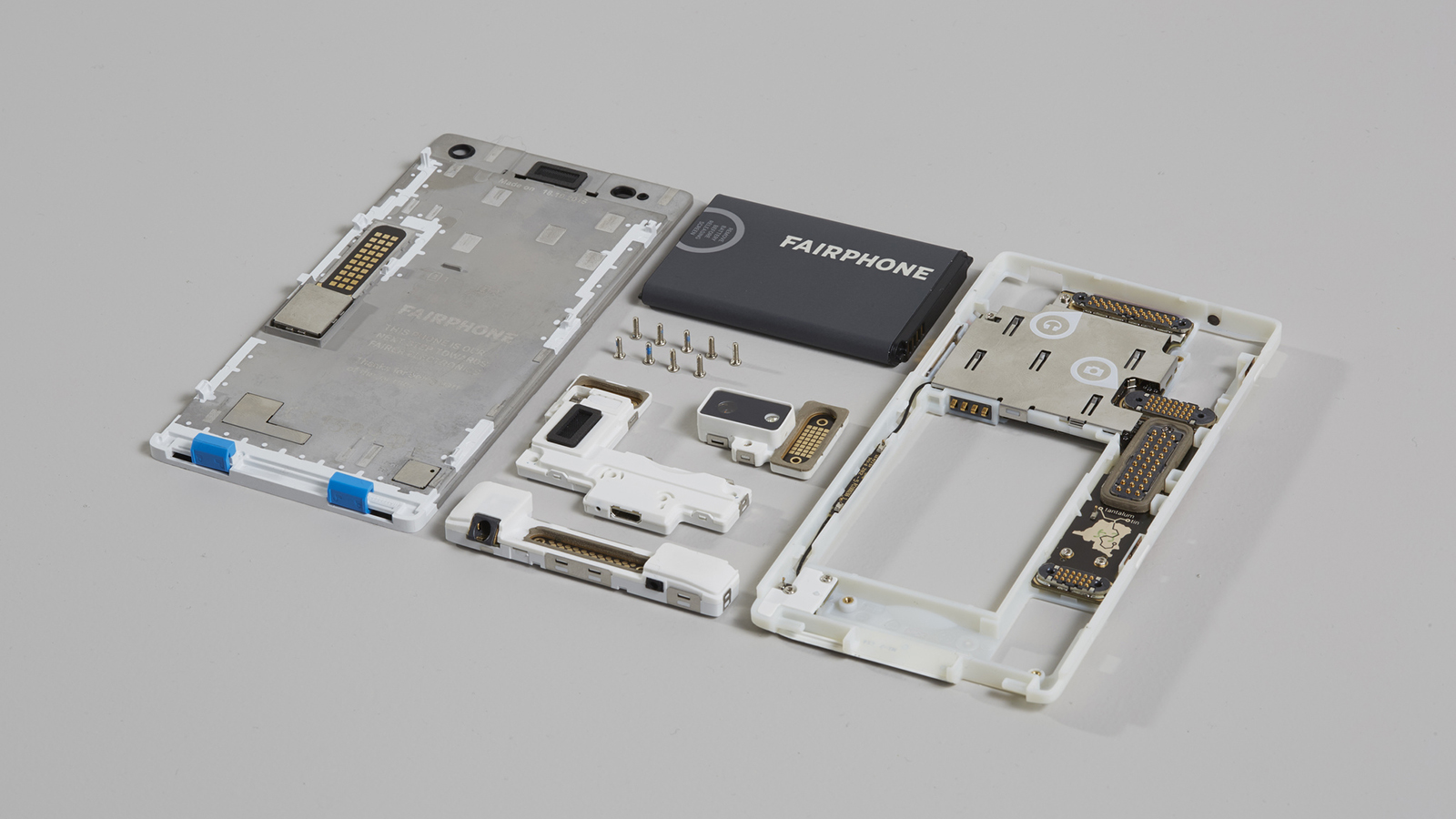Why you can trust TechRadar
As I've mentioned, the Fairphone 2 sits firmly in the mid-range camp as far as today's smartphones are concerned: it doesn't touch the leaders, but it'll get you through your day-to-day tasks competently enough.
Powering this ethically-sourced phone are a 2.26GHz quad-core Snapdragon 801 processor and 2GB of RAM. There's 32GB of internal storage (and don't forget that memory card slot we mentioned earlier), with no configuration options to choose from save for those coloured backs.
Wi-Fi and Bluetooth are included of course (as indeed is 4G/LTE, in case you thought the manufacturer was skimping on the high-speed connectivity); NFC is omitted, but the board has been configured to be able to accept an NFC-equipped back case in the future, should Fairphone or someone else build one.

The Fairphone 2's GeekBench 3 scores averaged out at 2347 for the multi-core test. Our old friend the Nexus 5X got 2990, while one of the best budget handsets of last year, the most recently launched Moto G, topped out at 1590 points.
Those benchmarks back up what the specs suggest on paper: this is a phone in the middle of the middle range. The Samsung Galaxy S6, by comparison, achieved a cool 4850.
Perhaps the biggest surprise is the presence of Android 5.1 Lollipop rather than 6.0 Marshmallow, which has become the standard (in terms of new phones if not old ones).
To give Fairphone its due, the skinning job they've done is subtle, and not at all bad: a list of recently and frequently used apps is one swipe away from the home screen. Swipe the other way to see the contacts you most recently got in touch with, and the people you contact the most.
Sign up for breaking news, reviews, opinion, top tech deals, and more.

Tap the Notifications icon and you can enable or disable alerts on an app-by-app basis, although of course this wouldn't have been necessary if Lollipop had been installed to begin with.
Another nice touch is the 'peace of mind' message on the lock screen that tells you how long it is since you unlocked your phone – it sounds like it won't work, but it does gently encourage you to not keep glancing at your handset quite so often.

Aside from a couple of more intensive apps and games, I didn't notice any sluggishness or lag in the week or so I spent with the phone, although of course this is something that can often become a problem gradually over time.
In the apps drawer, 'active' icons are separated from 'idle' ones (apps you haven't used for a month or more). It's another small tweak that makes a lot of sense.
And here's yet another one: privacy warnings when you install new apps, based on the kinds of permissions they're asking for. You can turn this off if you don't like it, but it's a handy reference to have, especially for the less technically savvy users out there.
From the perspective of someone who spends most of his time in stock Android, Fairphone's tweaks are intelligent and unobtrusive ones.

In the end I didn't even miss Marshmallow that much, especially once I'd installed Google Messenger for SMS duties (with all Google's apps spun out, all Android really is these days is a Settings screen, a home screen wrapper and some under-the-hood tweaks).
From a software perspective there's a lot to like about the Fairphone 2, and it's credit to the company that they've spent some time focusing on the Android skin as well as the hardware of the phone. It's difficult to imagine anyone disliking this phone on the basis of the OS or interface alone.
With the OS and a handful of apps installed on our test phone, we were left with 23GB of spare space.

Dave is a freelance tech journalist who has been writing about gadgets, apps and the web for more than two decades. Based out of Stockport, England, on TechRadar you'll find him covering news, features and reviews, particularly for phones, tablets and wearables. Working to ensure our breaking news coverage is the best in the business over weekends, David also has bylines at Gizmodo, T3, PopSci and a few other places besides, as well as being many years editing the likes of PC Explorer and The Hardware Handbook.
